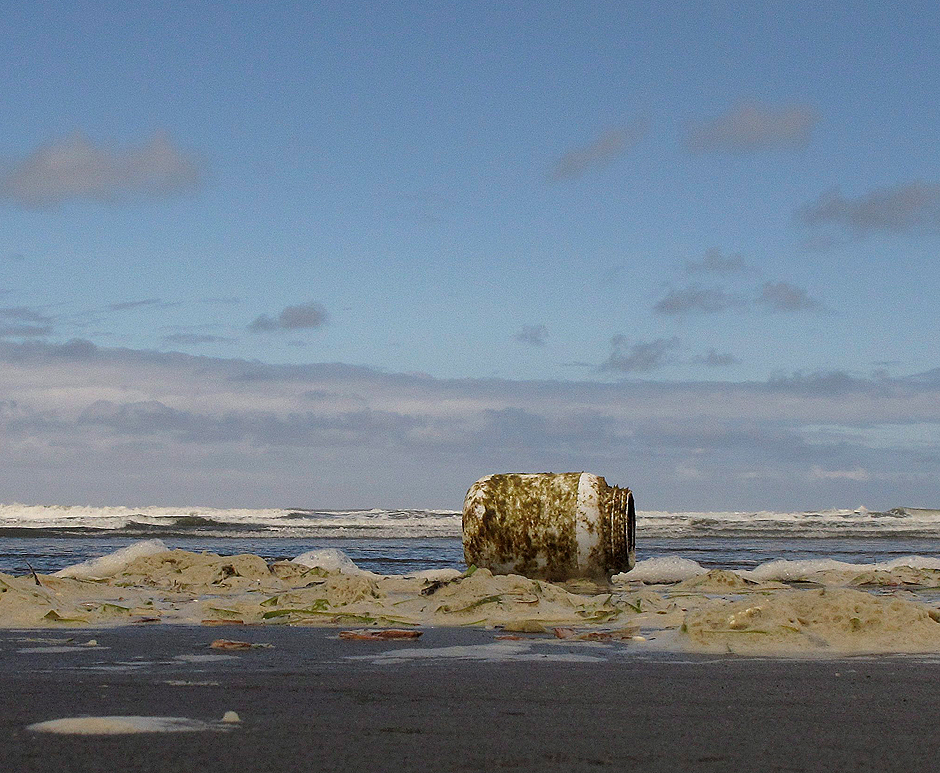VANCOUVER – In the weeks and months following the devastating March 2011 Japanese tsunami, governments along the West Coast of this continent began preparing for a wave of debris that was expected to wash up along their shores after a long journey across the Pacific.

More than two years later, while there has been a noticeable increase in debris along British Columbia beaches, officials now say the volume has been less than anticipated — and they’re taking that as an optimistic sign the worst predictions of debris-littered beaches might not materialize.
“I don’t think we can say definitely that we won’t, but the feeling now is that we’re hopeful we’re not going to see the kind of volume that the initial numbers would have predicted,” said Jim Standen of B.C.’s Environment Ministry during a briefing at the Japanese consulate in Vancouver Tuesday.
Still, the province is preparing to distribute $1 million in funding from the Japanese government, announced earlier, to help with cleanup operations in B.C.
A powerful earthquake off the east coast of Japan triggered a massive tsunami that killed thousands of people and washed away an estimated five-million tonnes of debris into the ocean.
Much of that debris was expected to sink or become trapped in a swirling collection of ocean currents often referred to as the “great Pacific garbage patch,” but experts believed as much as 1.5-million tonnes could potentially reach North America.
Even when debris is located, it is difficult to confirm whether it is linked to the tsunami.
- Life in the forest: How Stanley Park’s longest resident survived a changing landscape
- Bird flu risk to humans an ‘enormous concern,’ WHO says. Here’s what to know
- Roll Up To Win? Tim Hortons says $55K boat win email was ‘human error’
- Election interference worse than government admits, rights coalition says
Debris routinely washes up on B.C.’s beaches, whether it comes from Canada, ships sailing off the coast or other continents. The amount of debris carried into the ocean by the tsunami represents just one-sixth of the debris that enters the Pacific each year, according to the Vancouver Aquarium’s Great Canadian Shoreline Cleanup.
Standen said the increase in debris believed to be associated with the tsunami is arriving in the order experts predicted — objects that float high on the water such as Styrofoam arrived first, followed by an increase of wooden debris.
“If you go by that, we are consistent with the model; we’re just seeing volumes that are less, which is a positive thing,” said Standen.
Standen said the provincial government has spent between $200,000 and $300,000 to respond to the tsunami debris, while the federal government puts its own number at about $400,000.
That is in addition to a $1-million grant from the Japanese government, which will fund a program run by the B.C. government that allows local governments, First Nations and non-governmental organizations to apply for funding for their own cleanup projects. The province announced earlier this week that it would set up a program to distribute the money over the next two years.
Paul Kluckner of Environment Canada said coastal municipalities already have budgets to deal with ocean debris, and he said local governments will continue to take the lead when it comes to cleanup work, regardless of whether the debris is from the tsunami or elsewhere.
He said the funding from the Japanese government will be used if a municipality or First Nation is inundated with more debris than they can afford to remove, or for large debris that would be expensive to deal with, such as a 21-metre section of dock that washed up in Oregon last year.
The tsunami triggered a meltdown at the Fukushima nuclear plant on the Japanese coast, but Kluckner said pieces of debris that have been tested had no detectable radiation. He said the debris was washed away before the nuclear crisis even began.
Environment officials in Canada and the United States are also keeping an eye out for potential invasive species that may have hitched a ride on tsunami debris, but Kluckner said most shellfish and barnacles discovered on potential tsunami debris on B.C. shores haven’t been of concern.
He said there are two or three cases in which potential invasive species have been found, but he said experts are still testing the organisms to determine whether they could pose a problem.
The tsunami also raised the possibility of human remains washing up on North American shores, but Kluckner said there have not been any reports of that happening.



Comments